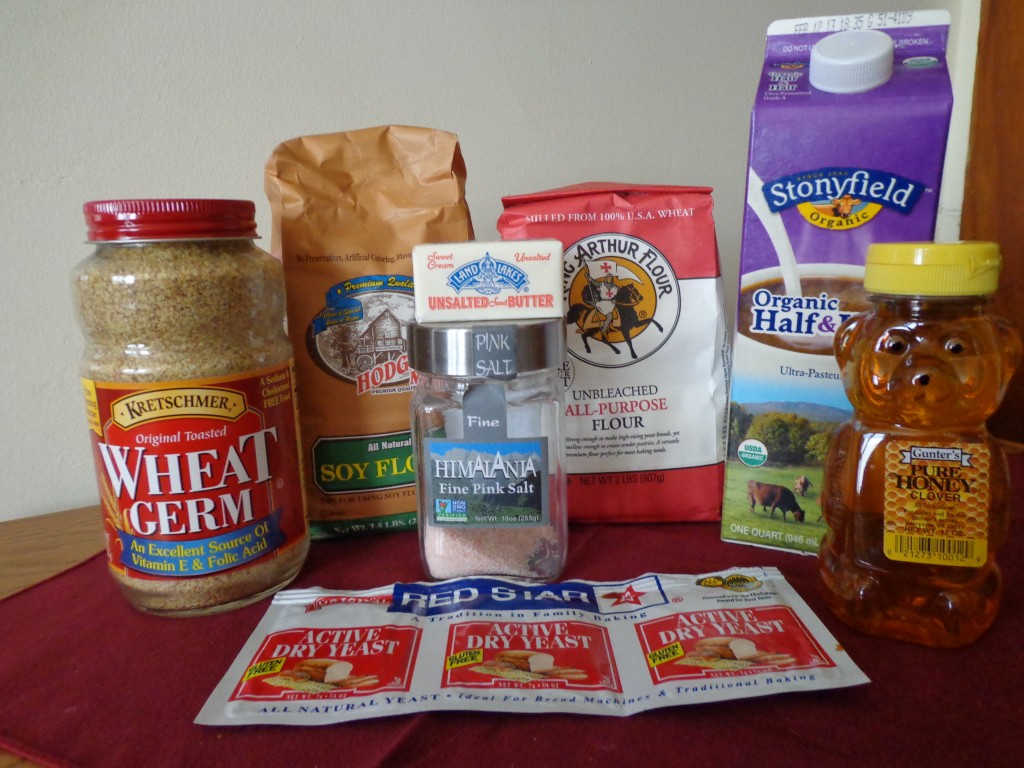
Ingredients:
- 2 tablespoons active dry yeast
- 2 tablespoons honey
- 1 1/2 cups lukewarm water (warm on your wrist like a baby’s bottle)
- 1 cup milk
- 3 tablespoons unsalted butter
- 1 tablespoon salt
- 1/3 cup soy flour
- 1/3 cup wheat germ
- 6-7 cups King Arthur unbleached flour
In a large mixing bowl on your heavy-duty mixer, fitted with the paddle attachment, measure the yeast, honey and water. Stir on low-speed until the yeast dissolves.
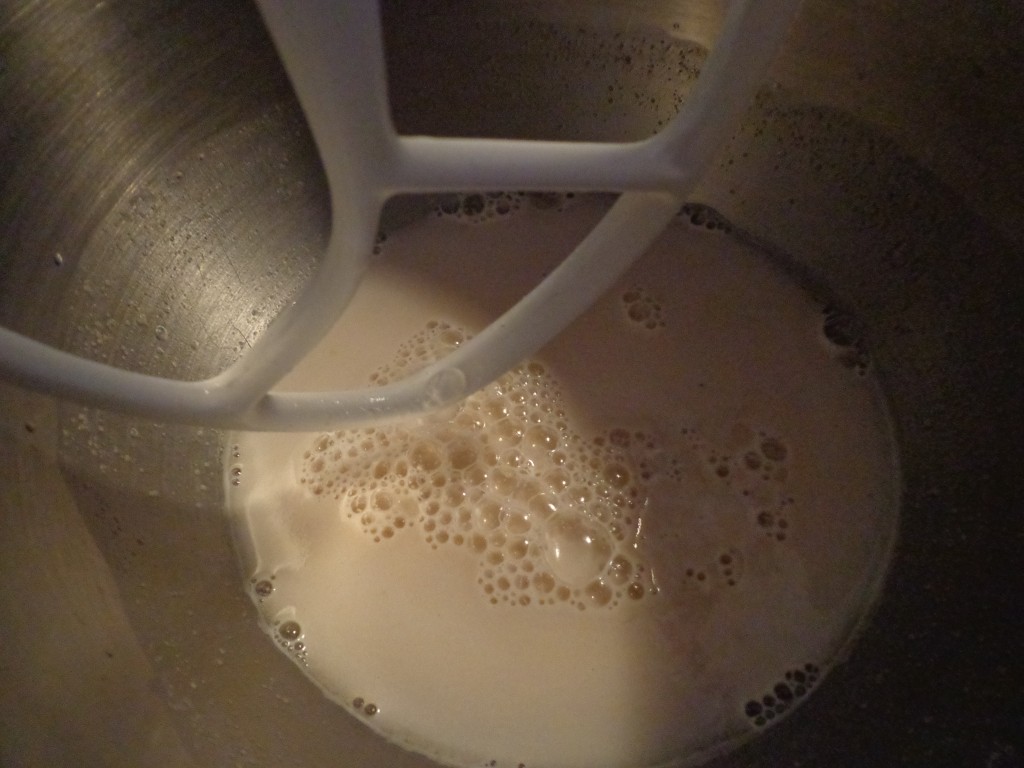
Add 1 1/2 cups of the flour and mix on medium until blended.
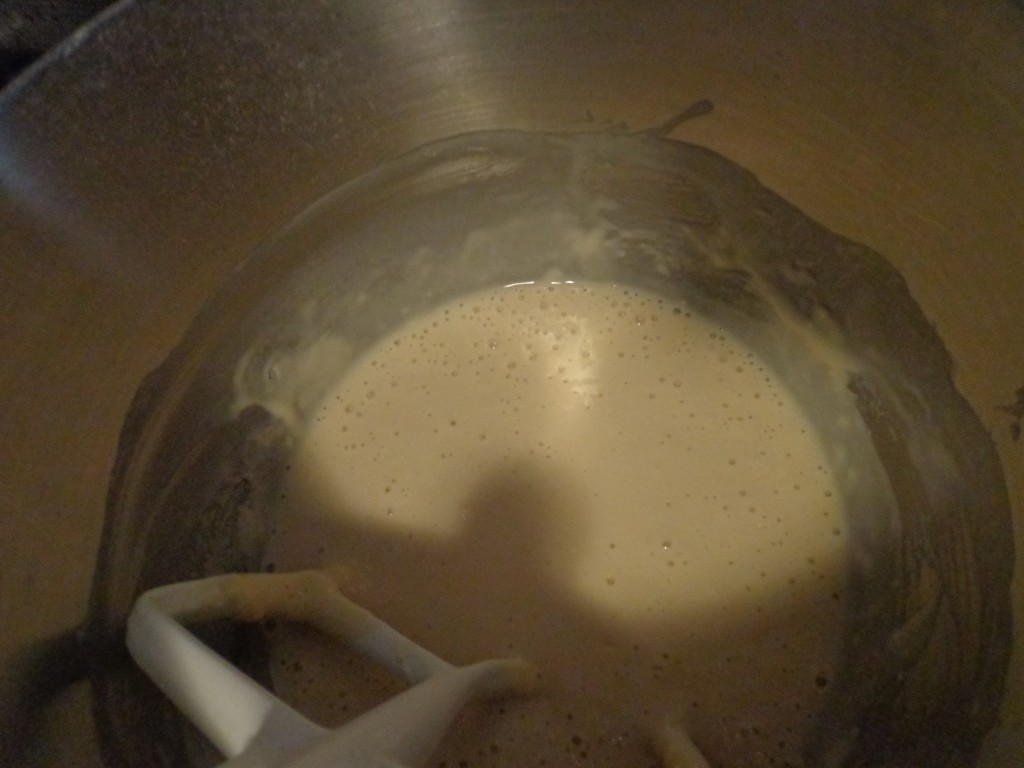
Detach the paddle attachment but leave in the bowl and place bowl in a warm, draft-free spot for ~30 minutes, until doubled in volume. I usually place it inside my gas oven (turned off of course). Back when I had an electric oven, I’d usually turn on the oven to preheat at 200 degrees for about a minute, then turn it off. This warm oven was an ideal environment to proof the yeast in this first step.
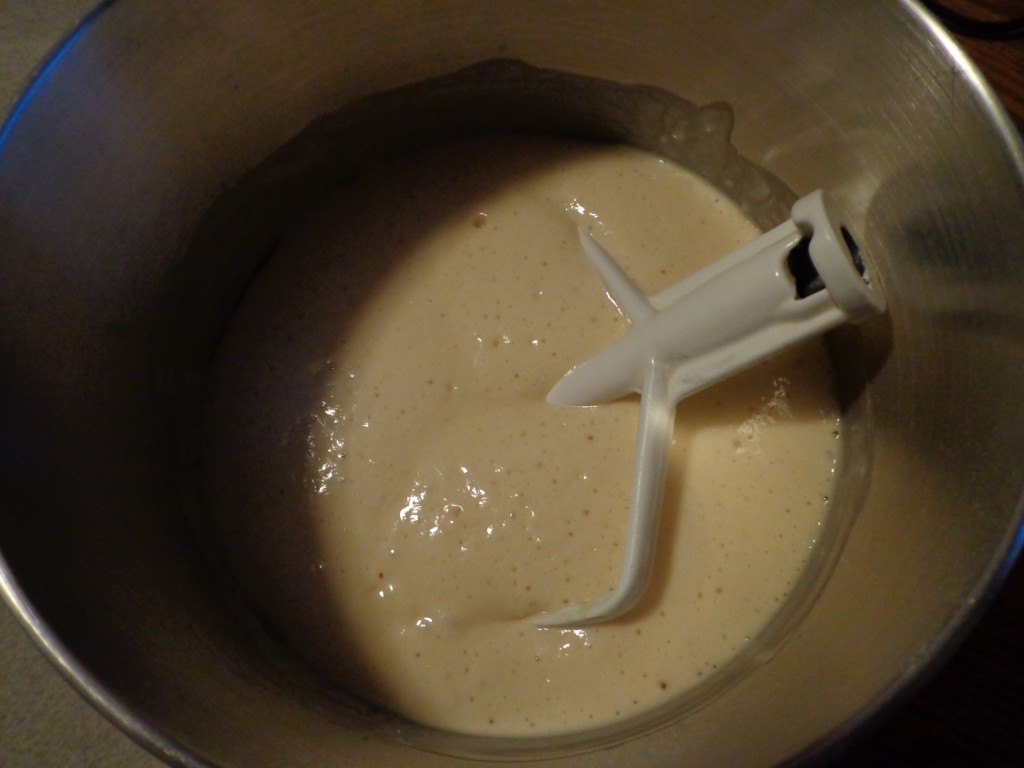
Meanwhile, in a small saucepan, heat the milk just to the scalding point (when you can begin to see tiny bubbles surface at the perimeter of the milk). Turn off the heat and melt the 3 tablespoons of butter in the milk while dissolving the tablespoon of salt. Set aside to cool.
Once the proofed yeast has doubled in volume, re-attach the paddle attachment over the proofed yeast mixture, add the cooled milk mixture and the soy flour and wheat germ. Mix for a moment to blend. Now add 4 1/2 cups of flour and mix only until you begin to see the dough thicken into a ball. Change to the dough hook attachment.
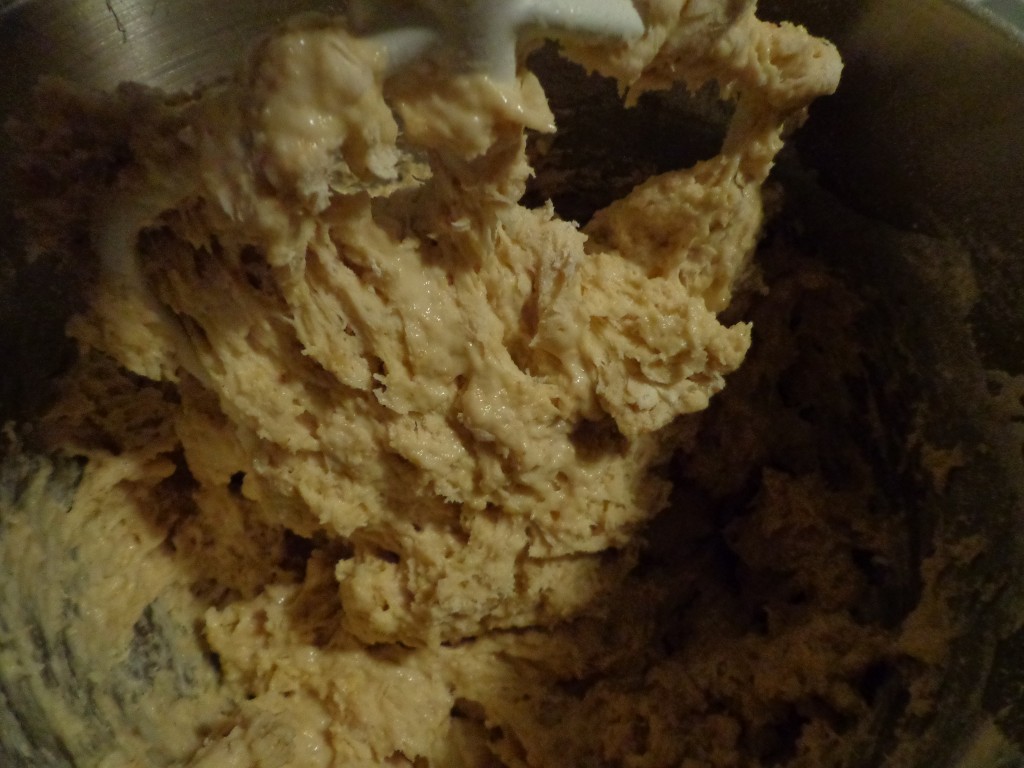
A little at a time, add an additional 1/2 to 1 cup of flour until the dough forms a ball and pulls away from the sides of the mixing bowl. At this point you can either continue to knead the dough using the dough hook for about 10 minutes…or turn out onto a floured work surface, and manually knead the dough for about 10 minutes by gathering it into a ball, sprinkle liberally with extra flour and fold half the dough on top of itself toward you, then smush the dough away from you against the work surface, using the heels of your palms. Now turn the dough a quarter turn in either direction while gathering again into a ball, fold/push away and repeat for 50 turns…or about 10 minutes. The dough will change in character, stiffening and no longer needing extra flour. This step develops the gluten which holds the carbon dioxide formed by the yeast during the rising process and which will form a soft texture while baking. You can tell the dough has developed enough gluten if you poke it with your finger and the indentation remains. Form a ball and place the dough into an oiled or buttered large mixing bowl, turning it around in the oil/butter to coat the top surface. Cover and place again in the warm, draft-free place for about 30 minutes, until double in volume.
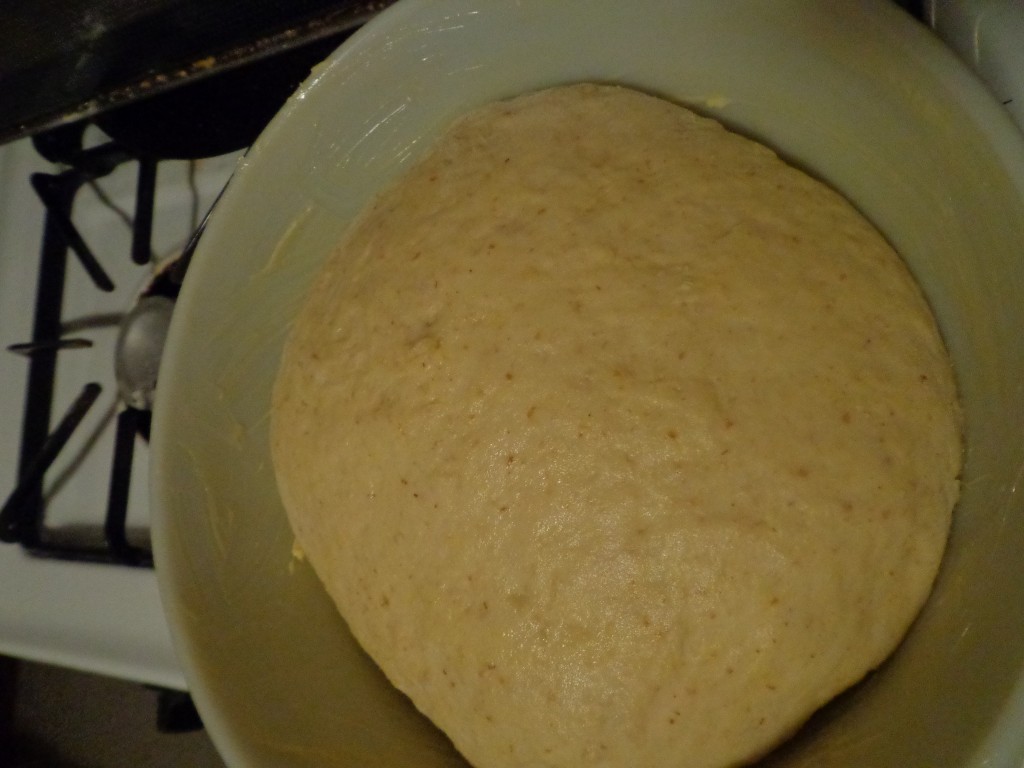
Butter two loaf pans. Punch down raised dough and cut into half.
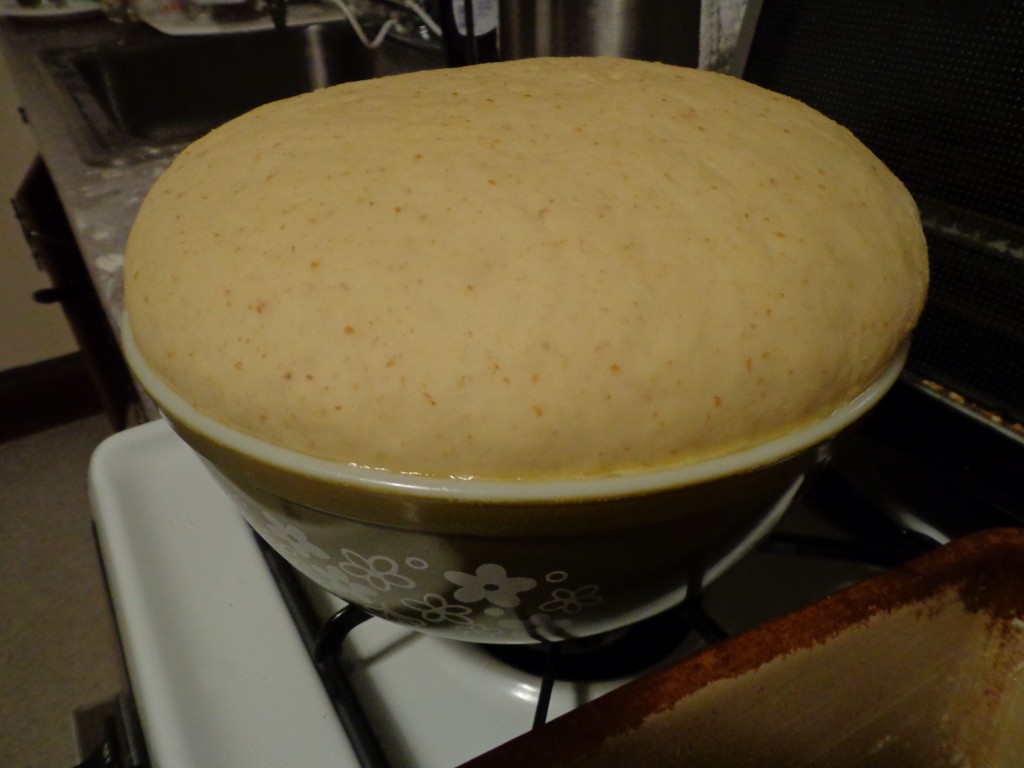
Place one half of the dough on the floured work surface and knead again briefly to work out the large yeast bubbles.
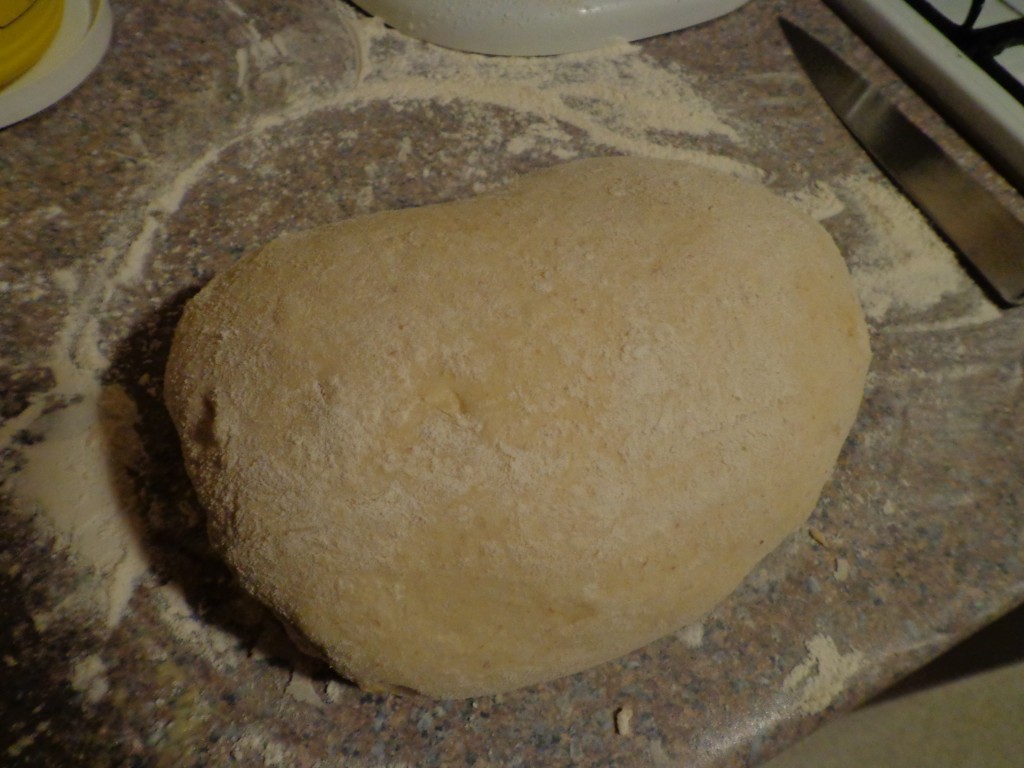
Using your fingers or a rolling-pin, press or roll out into a flat rectangle with the short end closest to you. You will notice many yeast bubbles pop while smoothing out the dough. Now, starting on the end nearest you, tightly roll up dough like a jelly roll until it forms a log, pinching the bottom seam together. Pinch the ends together and tuck under the loaf and place in a buttered loaf pan. At this point, I like to lightly smear soft butter over the top surface of the loaf. Repeat with the second half of the dough.
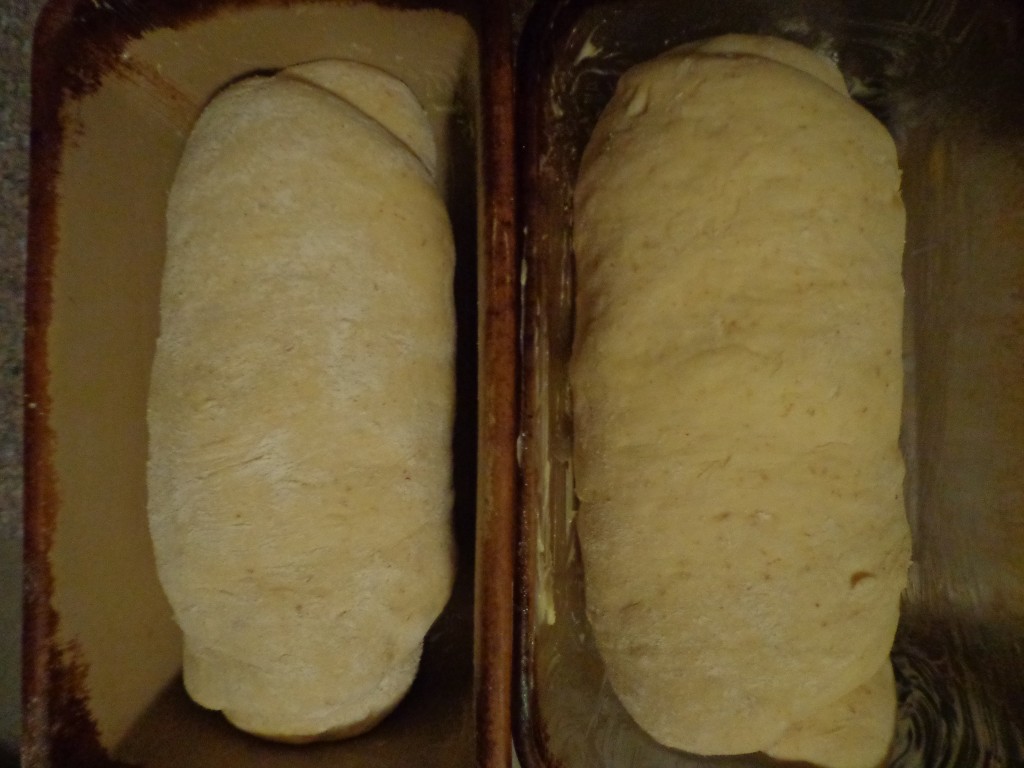
Once again, cover the loaf pans and place in a warm draft-free spot for about half an hour, until loaves have doubled in volume. They will now resemble loaves of bread.
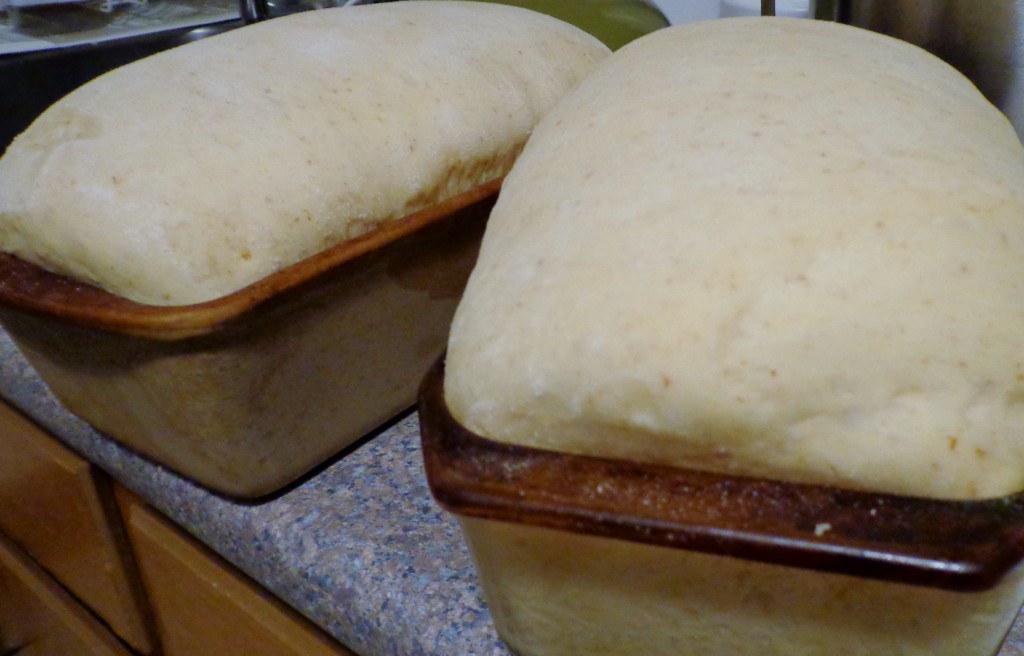
Since I use my gas oven as my proofing zone, I remove the raised loaves while I preheat my oven to 400 degrees. I keep an oven thermometer in the oven at all times, so I know when it’s hot enough. Bake the loaves for 30-40 minutes. You can test for doneness by briefly turn out a loaf onto a rack and tapping the bottom…if it sounds hollow and the top is a dark crusty brown…it is done!
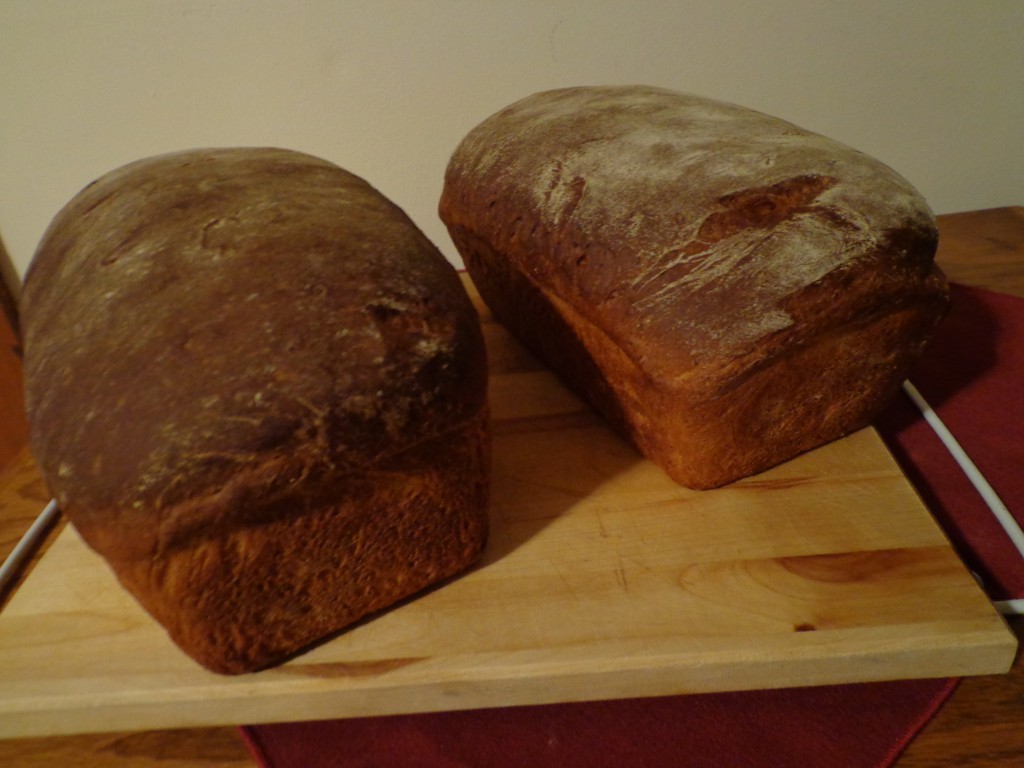
Now this is the hard part….let the loaves cool for half an hour before cutting into it, so the soft crumb doesn’t clump together from the hot steam of the baking process.
Drizzle with honey or spread with soft butter and taste the warm deliciousness!!!!
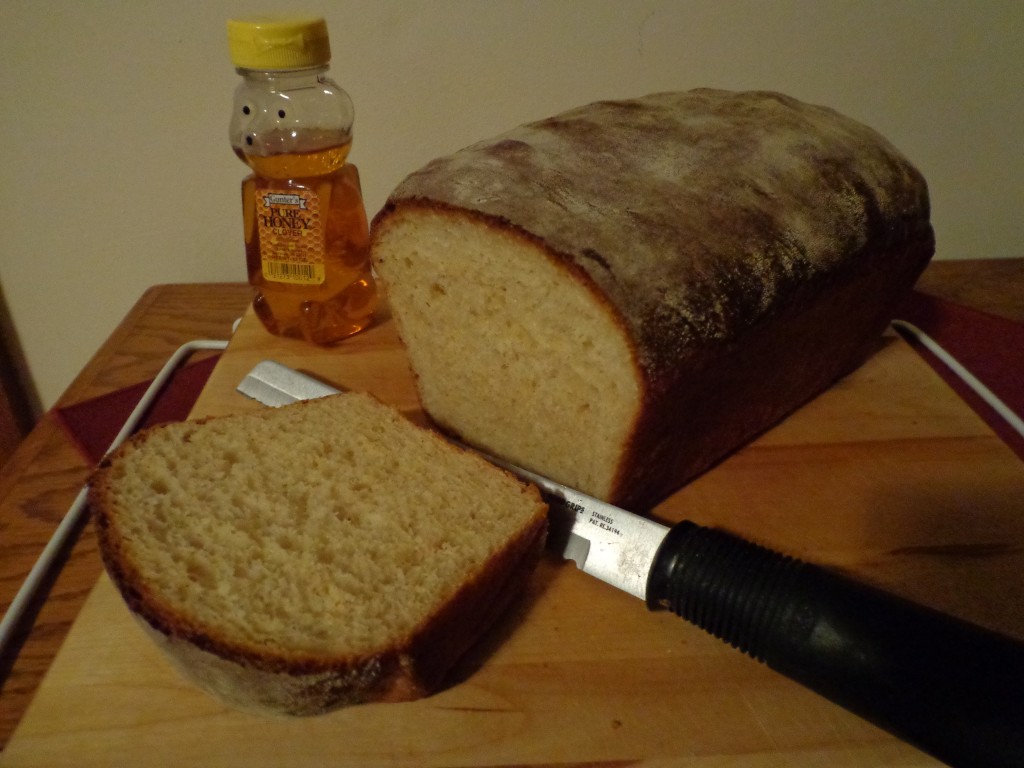
I have added ground flax seeds to this recipe if I have them handy, which only adds to the flavor and nutrition. The honey acts as a natural preservative to extend the shelf life to about 4-5 days. Toasted this bread is absolutely divine. On clear, dry days this recipe will probably only require 6 1/2 cups of flour…but in humid weather I’ve found it requires 7 cups. You can tell by the stickiness of the dough as you’re kneading it.
If you’d like dinner rolls, take half of the dough and roll it out into a long, flat rectangle, roughly the size of a cookie sheet. Spread with soft butter liberally. Slice the rectangle into 4 long strips (each two or 3 inches wide) horizontally (a pizza cutter is great for this). Place the strips on top of each other, stacking them like logs, ending with a buttered surface on top. With a sharp knife or pastry cutter, cut the stacked dough into 3 to 4 inch long pieces, fold each 4 inch piece in half and stuff into a well-buttered cupcake pan so that the cut ends all stick up with the folded middle at the bottom. If you have giant-sized cupcake tins, your pieces may need to be cut longer to fill each cup. Allow to rise covered, same as with loaves, about 30 minutes. Bake slightly less time as the dinner rolls are smaller than a full loaf…perhaps 15 to 20 minutes depending on size of tins. You will end up with rustic, buttery soft layers of individual dinner rolls with a crusty exterior…delish!
Very freezeable!
